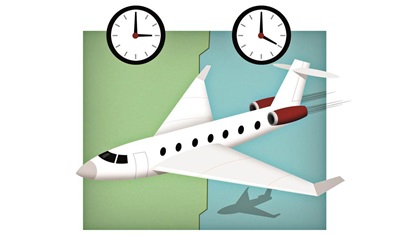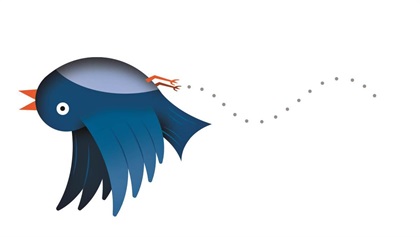 Checkride-ready
Checkride-ready
See how you measure up to FAA standards with these questions from the AOPA Pilot Information Center.
1. How should the flight controls be positioned while taxiing a tailwheel airplane north on a north/south taxiway, with a 20-knot quartering wind from the southwest?
A. Left aileron up, elevator neutral.
B. Left aileron down, elevator down.
C. Left aileron up, elevator down.
2. After landing at a tower-controlled airport, when should the pilot contact ground control?
A. When advised by the tower to do so.
B. After reaching a taxiway that leads directly to the parking area.
C. Prior to turning off the runway.
3. An aircraft departs an airport in the Eastern time zone at 0930 EST for a two-hour westbound flight to an airport located in the Mountain time zone. The landing should be at what time?
A. 0930 MST.
B. 1130 MST.
C. 0730 MST.
4. Which color identifies the power-off stalling speed with wing flaps and landing gear in the landing configuration?
A. Lower limit of the white arc.
B. Upper limit of the white arc.
C. Upper limit of the green arc.
5. While navigating cross-country and flying eastbound from VOR to VOR, how can one most accurately determine exact position without visual checkpoints, DME, or GPS?
A. Cross radial from a VOR east-southeast of the course.
B. Cross radial from a VOR north of the course.
C. Cross radial from a VOR west-northwest of the course.
 Ace
Ace
Can you correctly answer these questions from retired TWA captain and 28,000-hour pilot Barry Schiff?
- A fighter pilot is in a full-power vertical dive toward a target directly beneath his aircraft. What must be the pitch attitude of the aircraft?
- True or false? Many fixed-wing airplanes are capable of and approved for inverted flight. There also are some birds that can fly upside-down.
- A VFR pilot lifts off from a Runway 24 that has a magnetic direction of 245 degrees. He does this under the influence of a crosswind that causes a 5-degree left drift angle. He should climb, therefore, on an initial magnetic heading of ______ degrees.
- Helium provides buoyancy and maintains the shape of a blimp—just as it does a child’s balloon. As a blimp climbs, helium—like any gas—expands. What prevents the expanding helium from excessively pressurizing and damaging a blimp? (Note: Helium is not dumped overboard because it is expensive and is needed during descent when gas contracts.)
- With respect to the METAR weather format, what is the abbreviation for sleet?
Illustrations by John Ueland
Final Exam Answers
- The correct answer is B. Hold the elevator down with a tailwind so the wind does not lift the tail, and hold the aileron down on the side the wind is blowing from so the wing does not rise (control wheel right and forward). In this example, expect a quick and easy left turn, but a bit of a challenge initially turning right. (Airplane Flying Handbook, page 13-3)
- The correct answer is A. Wait for the tower controller to instruct you to contact ground control before switching to the ground control frequency and making the call. (Aeronautical Information Manual 4-3-20)
- The correct answer is A. Crossing two time zones during a two-hour flight puts one at the destination at the same local time that the aircraft departed. (Pilot’s Handbook of Aeronautical Knowledge, page 16-3)
- The correct answer is A. The lower limit of the white arc represents VS0, the stall speed in the landing configuration with the gear extended and the flaps fully down. FAR 1.2
- The correct answer is B. Using a crossing radial as close as possible to 90 degrees off the course being flown assures the most accurate position fix. Of course, a pilot could also ask ATC. (Pilot’s Handbook of Aeronautical Knowledge, Chapter 16)
- The aircraft must be more than 90 degrees nose down (slightly inverted) so that the horizontal component of thrust exactly equals and counteracts the net horizontal component of lift. If a 90-degree nose-down attitude is maintained, the horizontal component of wing lift would cause the aircraft to drift “ahead” of the target.
- True. Because of its angled wing structure, the hummingbird can fly inverted for short periods.
- 250 degrees. The pilot is expected to track along the extended runway centerline.
- There are two large, air-filled bags called ballonets inside the blimp. During climb, air is ported overboard from the ballonets, which then contract to make room for the expanding helium. When the helium contracts during descent, ram-air pressure created by the engines refills the ballonets to maintain constant helium pressure in the main bag of the blimp.
- Sleet is essentially a British term for ice pellets, the METAR code for which is PE. Ice pellets—or sleet—forms when melted snow passes through frigid air (usually ahead of a warm front) and refreezes.


